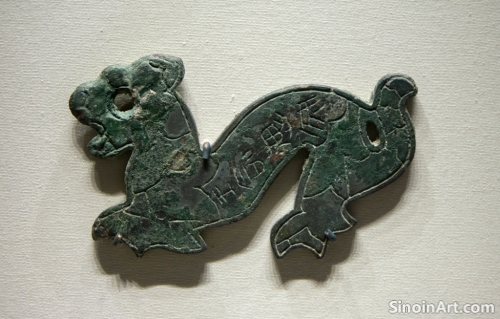The Impact of Bronze Ware on Ancient Chinese Ritual Practices: Sacrifices, Offerings, and Performances
|
Bronze ware played a central and multifaceted role in ancient Chinese ritual practices, serving as both vessels for offerings and as important components of the ceremonies themselves, emphasizing the powerful role of objects in spiritual life. The careful selection and use of bronze objects in rituals was a key element of ancient Chinese religious and spiritual practice.  Bronze ritual vessels, such as ding, gui, and zun, were used to hold food, wine, and other offerings for gods, spirits, and ancestors, acting as conduits between the living world and the spiritual realms. The use of these objects helped to connect the human world to the larger spiritual realms. The act of offering these items was believed to have a direct impact on the health and well-being of both the community and the spirits.  Bronze bells, chimes, and drums were also used to create music that accompanied ritual performances, which added both to the beauty and the symbolic power of these events. The music was often thought to have a direct connection with the heavens and also with the spirits of the ancestors.  The precision and detail in the creation of bronze ritual objects demonstrate the importance of adhering to specific guidelines and practices, emphasizing the power of tradition and symbolism in the creation of a meaningful ritual practice. The care and precision with which these pieces were made was an important element of the ritual itself. The study of bronze ware in ritual practices offers unique insights into the spiritual beliefs and practices of ancient Chinese society, and highlights the importance of ritual as a mechanism for social cohesion, personal transformation, and connection with both the past and the future. The continued study of these artifacts is essential to understanding the ritual practices of the period. |
Tag : bronze ritual practices, ancient sacrifices, Chinese ceremonies, ancestral offerings, spiritual rituals
Related information
- The Development of Bronze in the Spring and Autumn Period: New Forms, Techniques, and Regional Styles
- The Use of Bronze in Ancient Chinese Ritual Practice: Beyond Vessels and Symbols
- The Use of Bronze in Ancient Chinese Warfare: Fortification and Siege Technology
- Bronze Ware and Ancient Chinese Trade: Examining the Role of Material Culture in Economic Exchange
- Bronze Ware and the Representation of Authority: Imperial Symbols and Power
This article explores the development of bronze ware during the Spring and Autumn period, highlighting new forms, innovative techniques, and the rise of distinctive regional styles, reflecting the growing artistic diversity of the time.
This article explores the use of bronze beyond vessels and weapons in ancient Chinese ritual practices, highlighting bronze musical instruments, ritual implements, and ceremonial objects, and revealing how these objects played a crucial role in spiritual ceremonies.
This article explores the use of bronze in ancient Chinese warfare beyond weapons and armor, highlighting its role in fortifications, the creation of siege engines, and demonstrating its importance in military strategy and defense.
This article explores the role of bronze ware in ancient Chinese trade, highlighting its use as a valuable commodity, its impact on shaping trade routes and market systems, and its contribution to the broader economic landscape of the time.
This article explores the representation of authority in Chinese bronze ware, highlighting the use of symbols, emblems, weapons, and other objects to demonstrate imperial and elite power, and the connections between material culture, political ideology, and the assertion of control.